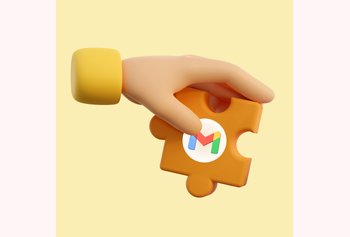10 Customer Success Emails for Different Scenarios
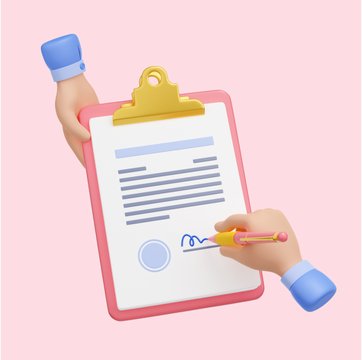
Table of contents
Customer success’s function begins right after a new client has signed a contract with your business. It focuses on building a strong relationship with the customer and offering them assistance once a sale is complete.
The stronger your relationship with a customer, the better your chances are for renewal, upselling, and cross-selling.
This is why it is important to regularly check in on your customers and ensure that their needs and requirements are being met by your business. Customer success managers can do this by sending an email to their clients every now and then. This is a good way to check the health of their accounts, remind clients of new opportunities, and identify any potential issues that could become a problem.
Sometimes, crafting the right email for a certain situation may just be what it takes to keep a client account engaged and satisfied.
So, if you’re a customer success manager looking for some help with sending a well-structured email to engage your clients, this guide is for you. Read on to learn more about the different types of customer success emails and when you should send them.
Table of Contents
- What are Customer Success Emails?
- 10 Types of Customer Success Emails for Different Scenarios
- Drive Loyalty with Well-Timed Customer Success Emails
What are Customer Success Emails?
A customer success email is a message crafted by customer success managers, that can be sent to the clients that they are in charge of.
The primary goal of a customer success email is to proactively assess the health of the account and ensure that they are achieving their desired outcomes with your organization’s products or services.
These emails can be tailored to different scenarios such as contract renewal, feature launches, onboarding, or feedback.
10 Types of Customer Success Emails for Different Scenarios
Here are some examples of well-structured emails that can be utilized to improve the overall customer experience and build stronger relationships.
1. The welcome email
The customer onboarding experience is one of the most crucial stages in a customer’s journey. A smooth onboarding process helps customers to get accustomed to your product in no time. This is important to engage the customer and help them unlock the value of your offering.
A well crafted welcome email creates a positive first impression on the customer and sets the tone for what they can expect from the rest of the onboarding process.
How to craft a good welcome email
- Use the customer’s first name and add a personalized greeting to make them feel welcomed.
- Include relevant information about the customer’s specific needs and use cases for your product.
- Use a warm and friendly tone throughout the email. Avoid using complex phrases and technical jargon.
- Add links to useful training resources such as webinars, how-to guides, and tutorials.
- Add details on what the customer can expect from their onboarding process and encourage them to take specific actions. This includes setting up their account, completing registration, or taking a product tour.
Here’s an example of how GitHub welcomes new developers to their platform
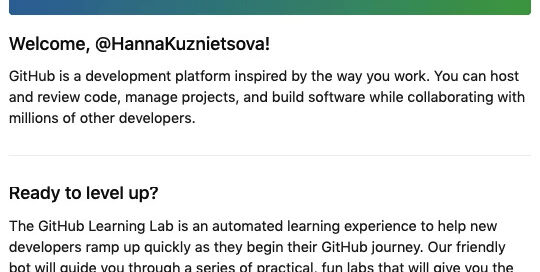
2. The product update email
Say you’ve added a new feature to your product. You want your customers to learn about this new feature and how it can be leveraged for different use cases. This is where you send a product update email to customers.
How to craft a good product update email
- Craft a compelling subject line that gives customers a quick overview of the feature launch.
- Add a no-fluff introduction. Keep it concise and add a feature description that gives customers some context into what they can expect.
- Outline the different use cases of the feature in a point-wise manner. Try to focus on the value these features will provide the customer.
- Add visuals such as images or videos to demonstrate the new feature and how they can access it.
- Add a CTA to encourage customers to explore the new feature.
Here’s how Hootsuite designs their product update emails
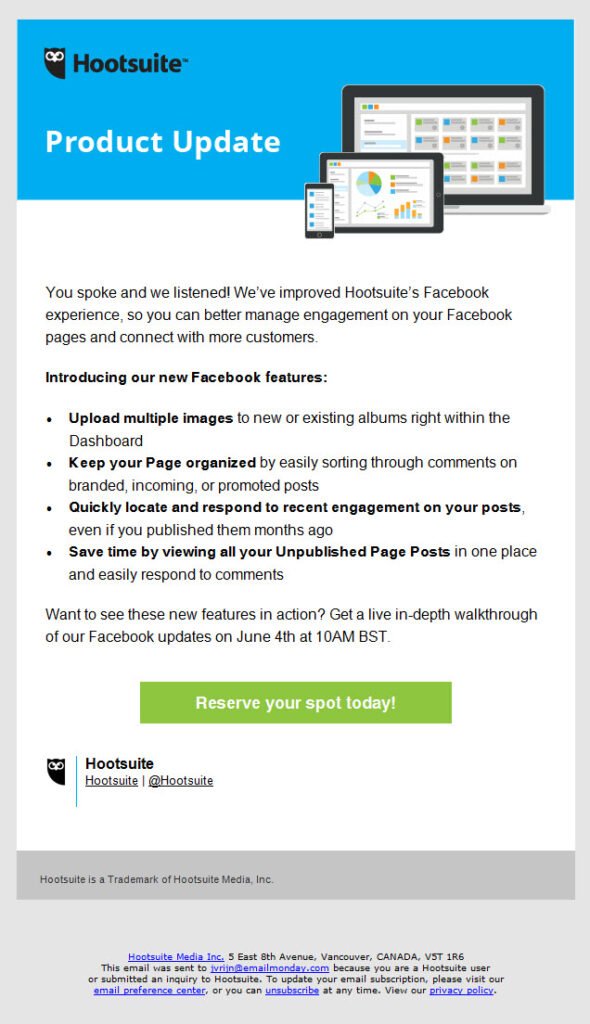
3. The re-engagement email
If you’ve noticed that some of your customers have not been engaging with your product for a while, it’s a good idea to nudge them. Lower engagement may eventually lead to customer churn since it means that users are not really interested or benefitting from your product.
Send such customers a usage tip email that includes information on how they can get the best out of your product. Talk about advanced use cases, shortcuts, and anything else that can capture your user’s attention.
How to craft a good re-engagement email
- Start with a clear and actionable headline to tell customers that the email contains tips to unlock better value from your product.
- Add a personal touch by mentioning the specific features the customer has not been using lately. You can get this data from a customer success management software like Gainsight, Churnzero, or Custify.
- List the usage tips clearly. Highlight how features can be used and include screenshots or GIFs to showcase their use cases.
- Add a CTA that encourages customers to take action. Also, provide a contact information so that they can reach out to you if they have any questions.
Here’s an example of how Briink does their usage tips email
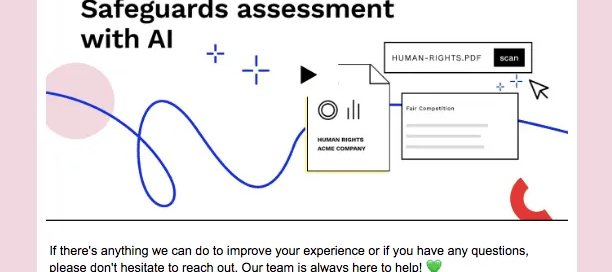
4. The milestone celebration email
Milestone celebration emails acknowledge customers and their journey with your business. They may have hit a significant mark like completing their onboarding, achieving a specific goal with your product, or renewing their subscription.
Irrespective of what they might be, celebrating these milestones can make your customers feel valued. If you want to take it a step further, you can even add a reward or incentive to make the customer feel more special.
How to craft a good milestone celebration email
- Start with a note of appreciation, thanking them for doing business with you.
- Highlight the milestone and add a couple of pointers on why this is important. You can even add usage statistics or significant achievements related to the milestone
- If possible, add in a discount coupon, freebie, or a free trial to a newly released feature.
Here’s an example of how Vimeo celebrates customer milestones

5. The renewal reminder email
According to Bain & Company’s report, ‘Prescription for Cutting Costs’, just a 5% increase in customer retention can increase revenue by 25-95%! This makes contract renewals an important source of predictable revenue for businesses.
Renewal reminders prompt customers who may have forgotten that their contract is about to expire. This ensures customers renew their contracts on time and do not face any service disruptions.
How to craft a good renewal reminder email
- Keep the email simple and brief. Add details on the renewal date, amount due, and the last date to renew the service.
- Include a couple of lines to acknowledge and appreciate the customer for their business.
- Add a few stats on how customers have been deriving value from your product or service.
- Add a clear, visible CTA that takes customers directly to the renewal page.
- If you see a chance to upsell, briefly mention how upgrading from the current plan can benefit the customer.
- Add links to contact support in case they need help with renewing their plan.
- Include a line that directs customers to an alternative option in case they wish to cancel their contract.
Here’s an example of how Livestorm sends renewal reminders
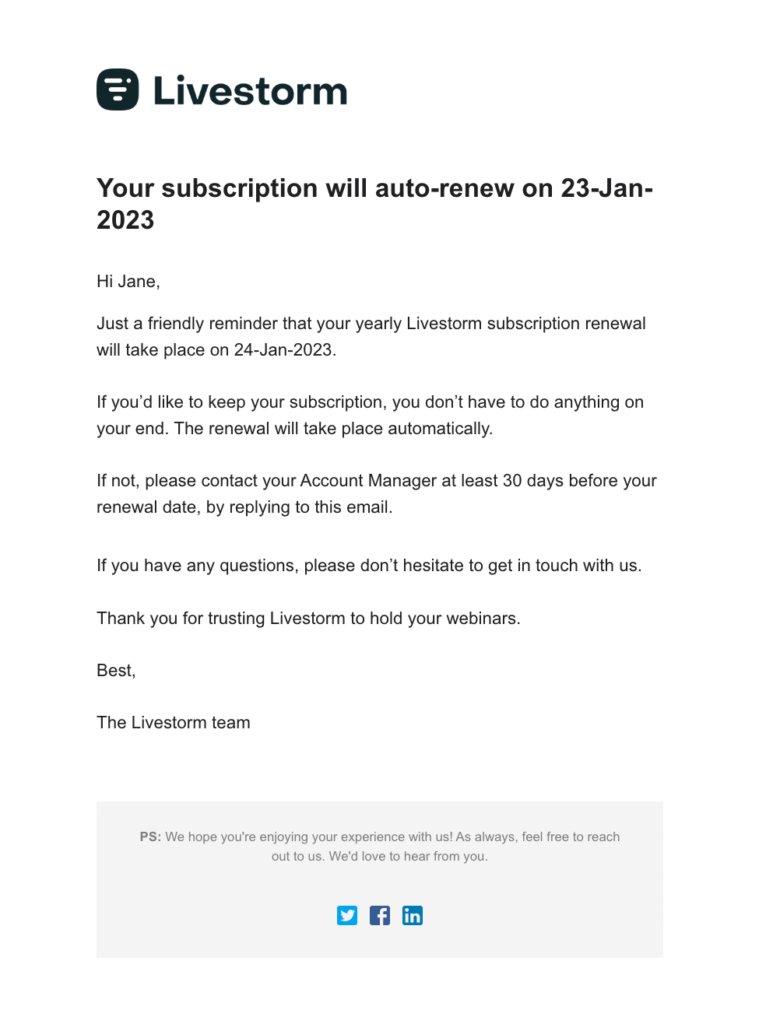
6. The customer feedback request email
Customer feedback emails can help businesses get insights into what needs improvement. It is a good indicator of how well your product or service is delivering value to customers, and what’s working well and what’s not.
Regularly seeking feedback also shows customers that you value their opinion. It demonstrates a proactive approach to addressing potential issues which is important for building customer trust and loyalty.
Feedback on your product or service is also essential to making improvements in your offerings so that they can cater better to your customer’s needs and preferences.
How to craft a well-structured customer feedback email
- Add in a line or two about why you’re seeking feedback – is it a routine check? Or maybe you want to know about a specific experience the customer had recently.
- Offering an incentive is always a good idea to get customers to give their feedback.
- Make it simple for customers to give their feedback. Provide a link that directly takes them to a survey page or you can ask them to reply to your email. Be very clear on what steps the customer should take.
- Ensure that the feedback process does not take too much of your customer’s time.
Here’s an example of how Slack does their customer feedback email
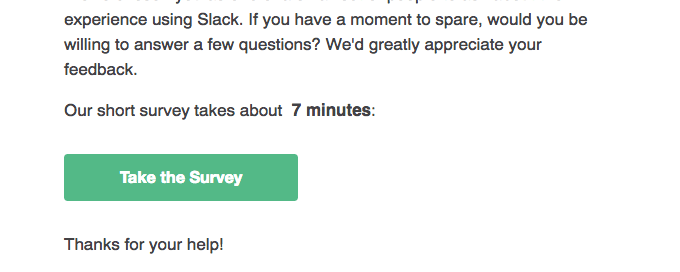
7. Case study request email
Case studies are a valuable asset to drive your marketing campaigns and sales pitches. A customer is more likely to choose your business if they find that their peers have been having a good experience with your product or service. It showcases your problem-solving skills and builds credibility for your business.
Aside from this, case studies can also be used to educate potential customers about your product and the different use cases for it.
How to craft a good case study request email
- Acknowledge the success your customer has had with your product or service.
- Ask them if they would be interested in participating in a case study. Specifically ask for their permission to share it across different channels such as social media, email, and website.
- Briefly explain the format of the case study. Add a few references from previous case studies.
- Explain the process in detail and what would be required from their end.
Here’s a sample of a well-structured case study request email.
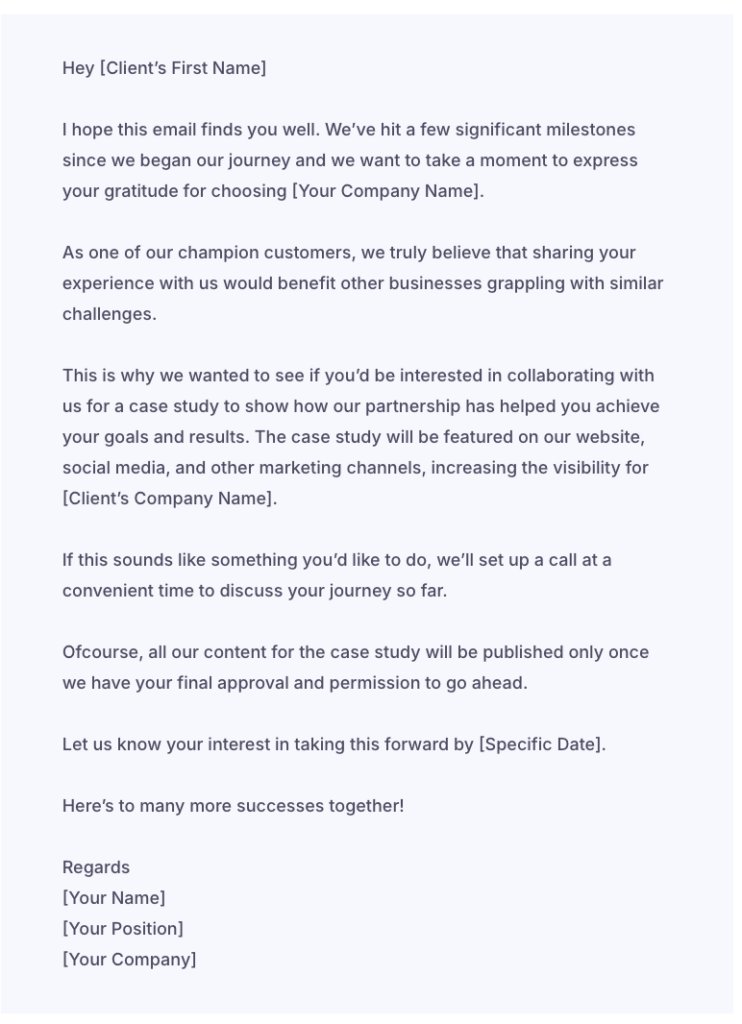
8. The training and education email
Sending periodic emails with educational content such as tips, best practices, and tutorials, can keep your customers continuously engaged with your product. It can empower customers and help them navigate the challenges of using your product or service.
Educational content and actionable tips are also important to encourage users to learn how to maximize their use of existing or new features. This improves product adoption, helping your customers leverage your product fully and get the maximum return on their investment.
How to craft a comprehensive training and education email
- State the context of the email and add a value proposition for how customers can benefit from going through the educational content.
- Provide a summary of the topics covered.
- Include links to the educational material.
- Provide an option to contact support in case they have questions.
- You can either send a single email with links to resources or do a series of emails that focus on different aspects of your product or service.
Here’s how Salesforce sends resources to customers
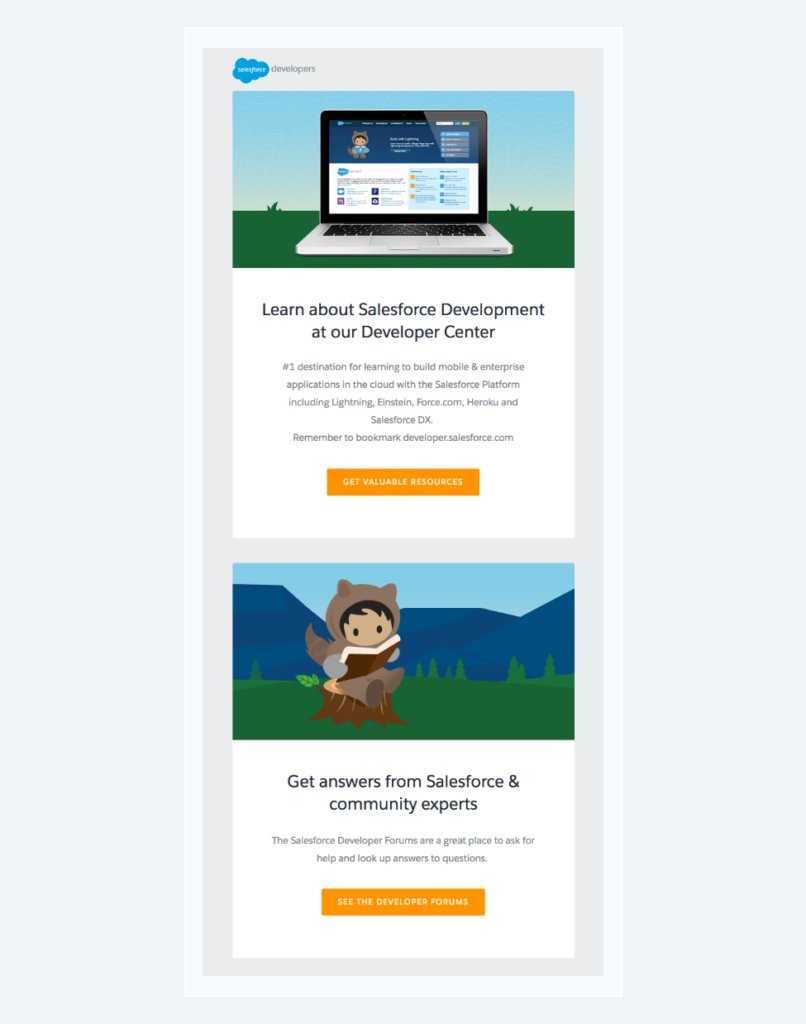
9. The customer referral email
Customer referral emails can help you tap into your existing client network to help you attract new business. Word-of-mouth referrals from your loyal customers are a cost-effective way to attract new clients.
Referrals can also help you access potential customers who were not otherwise accessible through your typical marketing channels. For instance, a customer who has had a positive experience with your brand may refer you to a friend running a small business.
How to craft a good referral request email
- Explain the referral program and why the customer’s recommendation is important.
- Mention how the referral could mutually benefit the customer and your business.
- Add incentives if possible to encourage the customer to take action.
- If you have a referral link or a unique code, include it in the email so that the customer can share it with their peers.
Here’s how NordPass sends referral requests to customers
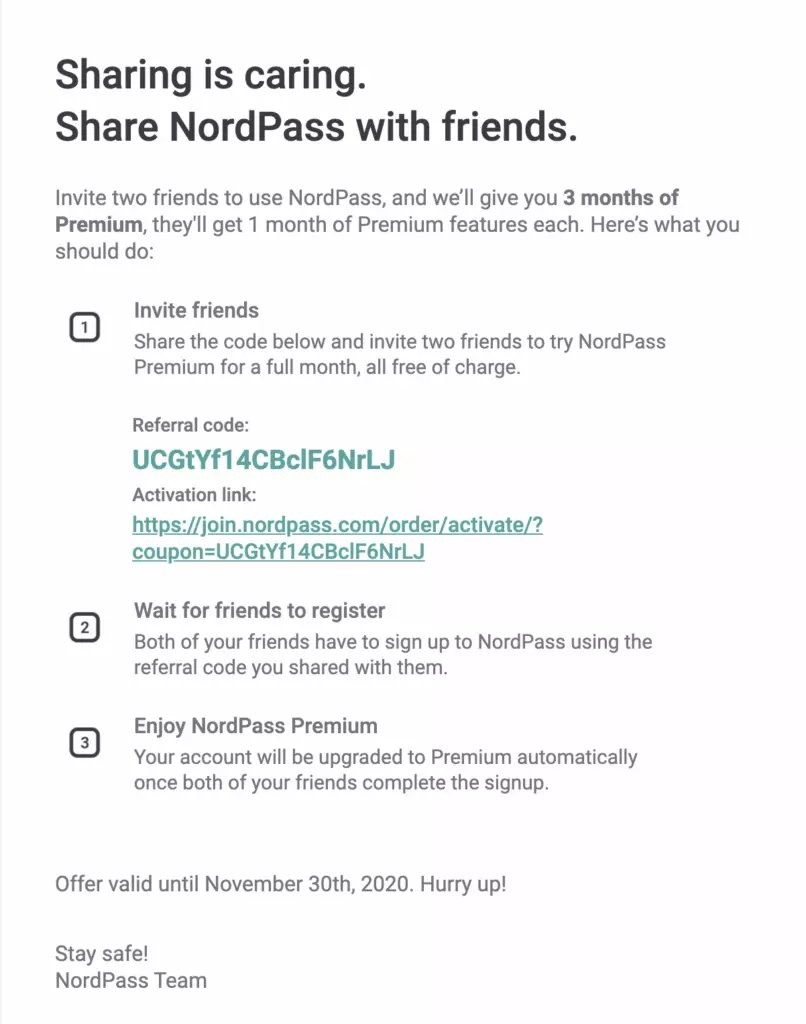
10. The upsell/cross-sell email
Getting an existing customer to upgrade their plan can increase their lifetime value and is much more cost-effective than acquiring a new customer.
You can use upsell/cross-sell emails to provide relevant product suggestions that can help customers get more value out of their business. Time these emails based on the milestones in a customer’s journey for better conversions.
For instance, you can send these emails when customers reach a certain usage milestone, before contract renewal, or based on their browsing history.
How to craft an upsell/cross-sell email
- Add a personal touch to the email by mentioning upgrade options that are tailored to the customer’s behavior. For instance, if a customer tends to use an AI feature in the product for helping them write copies or emails, suggest an upgraded plan where they can leverage AI for more advanced use cases such as project and knowledge management.
- Highlight the benefits of upgrading to a higher plan. Make it convincing so that customers know how they can truly benefit from this upgrade.
- Keep the email actionable without sounding too salesy. You do not want to push the customer.
- Offer a special discount to help customers get started so that they can experience the benefits of the higher plan before making a decision to pay the full price.
Here’s how Evernote designs their upsell emails
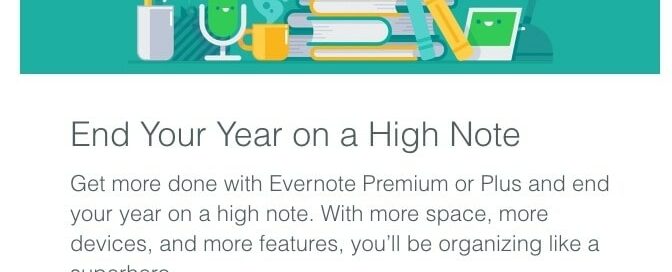
Drive Loyalty with Well-Timed Customer Success Emails
Customer success emails are a nifty tool to strengthen your relationship with clients and build their loyalty. Sending the right customer success email at the right time might just influence your customers to renew their contracts or upgrade to a higher pricing plan.
These emails can proactively engage your customers and even help you in narrowing down any red flags before they escalate into a problem.
You can leverage the tips and examples we’ve shared above to craft compelling customer success emails that go a long way in making your clients and users feel valued, supported, and informed throughout their journey with your business.
.














